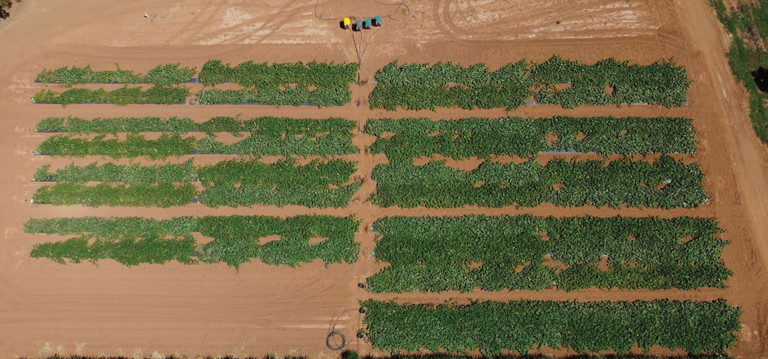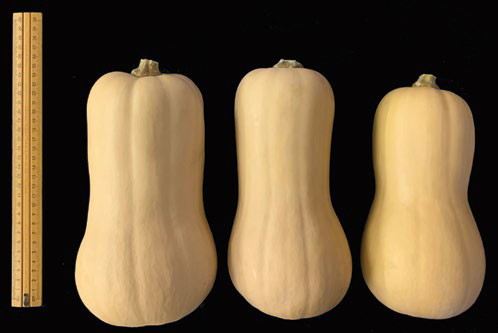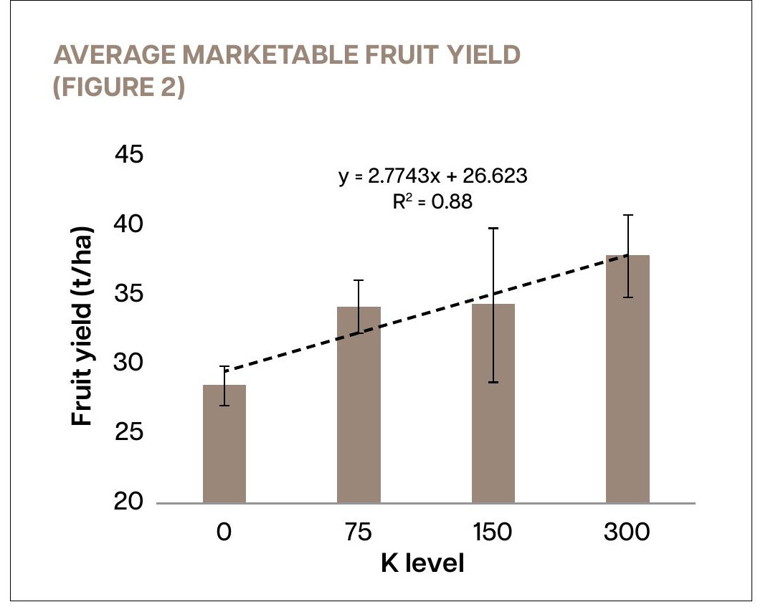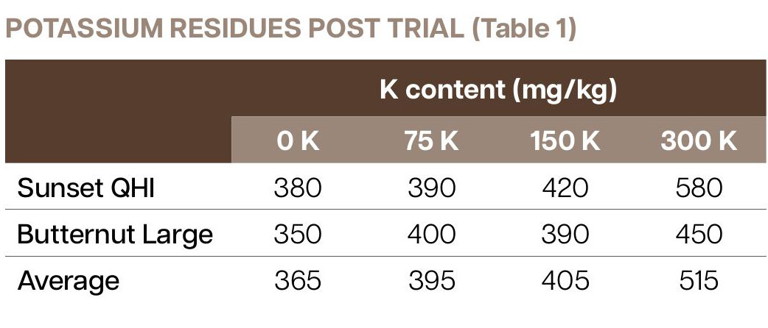FEATURE pumpkin casestudy
Productive
POTASSIUM
Do K fertilisers increase pumpkin yields in Carnarvon? Evidence suggests they do.
Words Giao Nguyen, DPIRD Research Scientist, Vegetables
THE alluvial soils in Carnarvon are well-drained and loamy, and have a high natural fertility. The region has low rainfall with a warm semi-arid climate and a reliable irrigation supply. This makes it well-suited to growing a wide range of horticultural crops. There are about 170 horticultural properties in the area that produce various vegetable crops, such as tomato, capsicum, eggplant, zucchini, pumpkin and fruit crops, with an average gross value more than $110 million per annum.
Previous studies on vegetables conducted by the Department of Primary Industries and Regional
Development’s (DPIRD) Carnarvon Research Station showed that nitrogen was the only yield-limiting factor, with occasional trace element deficiencies. However, local growers have been applying a range of potassium (K) fertilisers, often at high rates, regardless of high K in the soil and irrigation water.
Although K is involved in various physiological processes and plays a vital role in determining the yield and quality of fruit and vegetables, tomato yield reductions have been observed under excessive applications of K fertiliser.
To address the question of whether the application of K fertiliser is required and the optimum rate for the vegetable production in Carnarvon, an initial fertiliser trial was conducted in June 2020 on sweet corn at the Research Station. The results showed crops with low K treatment yielded less than the treatments that received enhanced levels of K and magnesium (data not shown). During the October 2020 to February 2021 cropping season, a second K rate fertiliser trial was conducted on butternut pumpkin.

“ … it is recommended that a
Kfertiliser application rate of
between 75 to 150kg/ ha would be
the most effective for butternut
pumpkin yield and quality ”
Photography courtesy DPIRD
The most recent trial involved the application of four rates of K fertiliser (0, 75, 150 and 300kg K/ha) on two varieties of butternut pumpkin. All other macro and trace elements were identical for all experimental plots. Each subplot dimension was 0.9m wide by 15m long. Prior to planting, soil samples were taken from individual plots and pooled for each fertiliser treatment. Further soils samples were taken after harvest. All the soil samples were analysed by the Australian Precision Ag Laboratory.
Prior to seeding, beds of 90cm wide and 10cm high were formed, spaced 1.2m apart (except for the spraying track, which was 1.8m wide). Polyethylene mulch and drip irrigation tape were laid at bed forming and holes were opened at 60cm intervals for sowing. On October 30, 2020, the pumpkin seeds were manually sown with one seed per hole to achieve the final density of about 7500 plants/ha.
The pumpkin were harvested on February 1, 2021. The average marketable fruit yield for the treatments varied between 28.4 t/ha (for K = 0) to 37.6 t/ha (for K = 300), with an average of between 2.5 and 3.5 marketable fruits per plant (Figure 1 and Figure 2).
Application of K fertiliser was shown to increase yield and fruit number per plant. However, it was at the cost of decreased sugar content (brix).
Testing showed K content available in the soil before the trial was high (780mg/kg) compared to the desired K level of 250 to 450mg/kg for butternut pumpkin production. Post-trial soil analysis showed only the 300 K treatment left an excessive residue of K in the soil (515mg/kg on average) (Table 1).
Overall, results confirm the addition of K fertilisers does contribute to the marketable fruit yield of butternut pumpkins. The downward trend between K levels and the brix content of the fruits might suggest that only a certain amount of K fertiliser should be applied to achieve optimal quality. So, it is recommended that a Kfertiliser application rate of between 75 to 150kg/ha would the most effective for butternut pumpkin yield and quality.

BUTTERNUT PUMPKIN FRUIT SIZE (Figure 1)


This amount is pure K only. To convert the amount of various K fertiliser forms to pure K, growers can use a Fertiliser Calculator on DPIRD’s website.
This is the first experimental evidence elucidating the role of K fertilisers to horticultural crops under the current soil condition in Carnarvon. Further trials are needed to fully understand the response and K requirements of other high-value vegetable crops in the region.
MORE INFORMATION
Call Giao Nguyen on 9956 3327 or email giao.nguyen@dpird.wa.gov.au. Thank you to the Carnarvon Research Support Unit for assistance in conducting this trial.